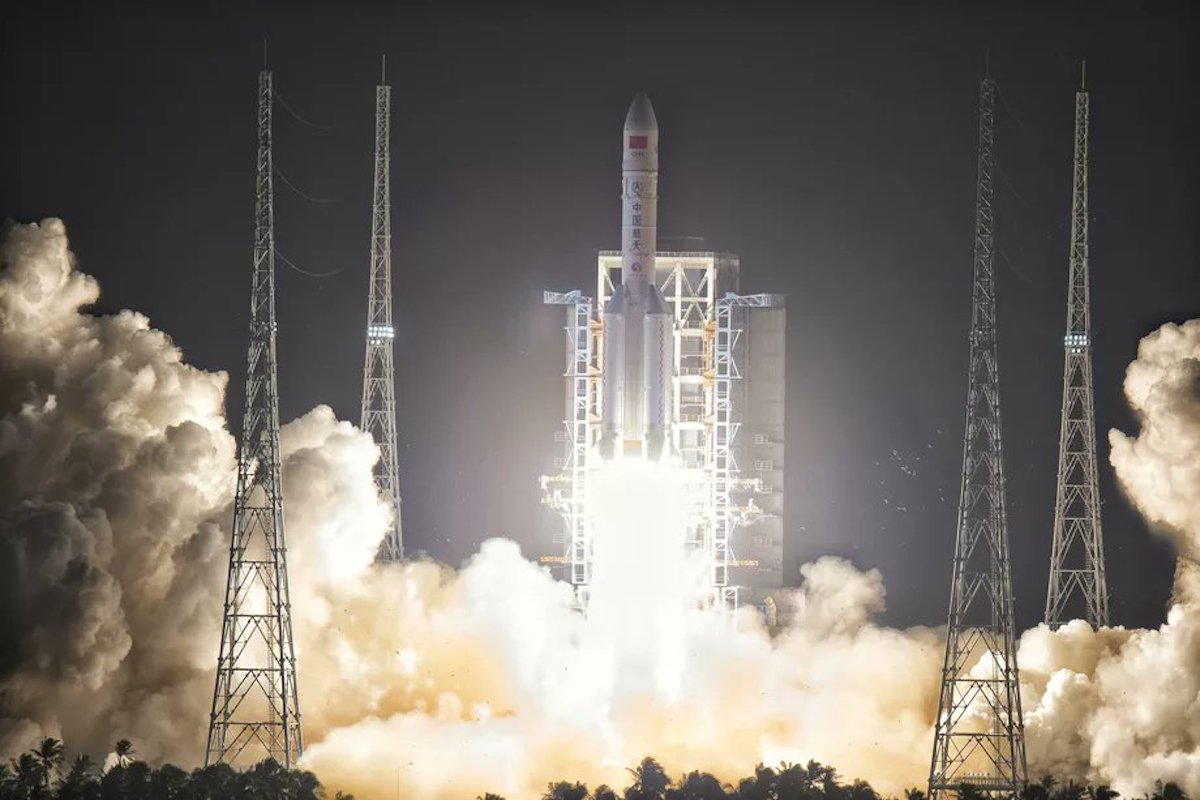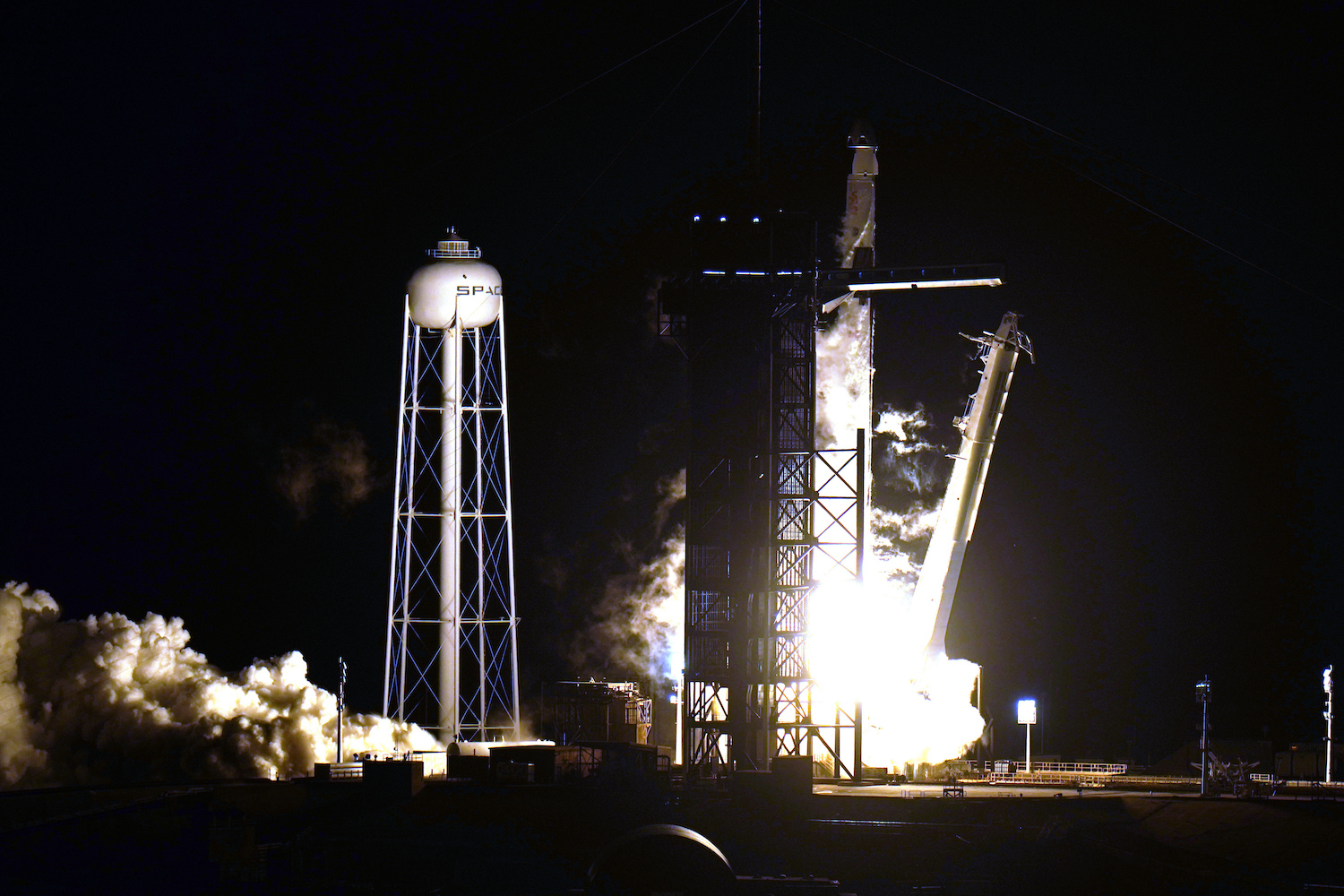China’s National Space Agency (CNSA) has come under fire by the National Aeronautics and Space Agency (NASA) after remnants of its Long March 5B-Y2 rocket plummeted into the Indian Ocean after re-entry. The reckless disposal of the 5B-Y2 residual scraps has revived discussion in the need for regulation of space materials and safe disposal of space junk.
This is not the first time China has received criticism for its management of extraterrestrial property. In 2007, China shot down one of its own aging weather satellites with a medium-range ballistic missile from 500 miles away. The practice of launching missiles into space isn’t new, as many of the world’s most active space agencies have tested anti-satellite weapons (ASATs) on decaying satellites in the past. The United States used an ASAT in 2008 to prevent a plummeting satellite from crashing into the Earth and potentially causing catastrophic damage. Additionally, both Russia and the U.S. performed numerous ASAT tests in the midst of the space race of the late 20th century.
The demolition of satellites using missiles is extraordinarily dangerous because it dispels thousands of pieces of space junk into orbit, which makes space travel more risky and puts currently-active satellites in danger. According to physicist David Wright, China’s satellite explosion 14 years ago likely caused more than two million pieces of scrap larger than a millimeter in size each to hurtle off into orbit. Objects of that size might not seem so deadly, but in Earth’s orbit, space junk can travel at speeds upward of 20,000 miles per hour, turning even the smallest bits of metal into speeding particles capable of causing more damage than a round shot from a tank.
Beyond reckless disposal of satellites, Earth’s orbit is also getting more and more crowded, raising concerns about how many satellites should be allowed to orbit the planet. The House Subcommittee on Space and Aeronautics previously assembled in February 2020 to discuss mitigating damages in an increasingly-overcrowded orbit. Potential plans include working with NASA and the Department of Commerce to strike deals with privately-owned space companies, as the planet’s orbit is not only packed with government satellites and stations, but also with tens of thousands of commercial satellites from companies such as OneWeb and SpaceX. So-called satellite constellations also risk polluting the night sky and causing potential chain reactions of satellites smashing into each other (also known as the Kepler effect).
As far as judicial action is concerned, space is effectively the wild west or the high seas. There’s very little regulation in place to prevent companies or agencies from launching what they want into the midnight sky or to punish perpetrators of orbital pollution. Many national space agencies have guidelines in place to mitigate creation of space junk—such as the “Preserve the Space Environment” section of the U.S. National Space Policy or the United Nations Committee on the Peaceful Uses of Outer Space’s Space Debris Mitigation Guidelines—but without legal enforcement, such guidelines are completely platitudinous.
It doesn’t help that allowing national governments to remove or dispose of its aging satellites or space debris could open up international security issues. After all, if the U.S. or China can shoot down their own satellites with ASATs, what’s preventing them from shooting down their adversaries’ satellites?
Clearly, space debris poses a considerable threat to the tens of thousands of satellites currently orbiting Earth, but what about its threat to us on the ground? A majority of space junk burns up upon re-entry, so any small particulate junk that falls out of orbit will have melted away long before it reaches the surface of the planet. However, much larger pieces of debris can pose a considerable threat, depending on where they land.
Most rocket re-entries are relatively harmless. Some Oregonians may remember the light show produced by SpaceX’s Falcon 9 debris burning up over the state at the end of March. Although some may have mistaken the glowing astral streaks as a UFO or a harbinger of doom, they were in fact harmless molten space junk. Center of Astrophysics astronomer Jonathan McDowell noted that reentries of this size occur “about once a week” nowadays. About two weeks later, a large black cylindrical object—currently suspected to be a residual pressure vessel from a SpaceX rocket—washed ashore in Lincoln County, Oregon.
The Long March 5B-Y2’s crash landing in the Indian Ocean is a particularly striking event given that most rockets burn up upon reentry. NASA administrator Bill Nelson criticized China’s failure to ensure full burnup of the rocket, stating that “it is clear that China is failing to meet responsible standards regarding their space debris.” It is currently unclear whether the rocket debris collided with land or water, and the U.S. Space Command has stated that the exact location of impact—estimated to be near the Maldives archipelago—will not be released to the public.
McDowell also chastised China, noting it was completely possible that the rocket debris could have landed in a densely-populated area such as New York or Beijing, and saying that the incident “makes the Chinese rocket designers look lazy.”
“It was not, and is not, NASA’s job to track foreign space debris, except at a general policy level,” McDowell tweeted on May 9. “Other countries and companies are not blameless either. The Falcon 9 stage 2 that reentered over [Washington] on Mar. 26 was MUCH smaller…but SpaceX was not transparent about it.”
U.S. military commanders pleaded to Congress on May 7 for greater space regulation to prevent space from becoming “the wild, wild west where every satellite, astronaut, cosmonaut, or taikonaut has to defend itself,” according to U.S. representative Jim Cooper. Much of the hearing’s discussion was tailored towards the potential dangers of international warfare bleeding into the planet’s orbit. In a press briefing on the same day, White House press secretary Jen Psaki was asked if the White House would condemn the “reckless behavior from China’s space program.”
“The United States is committed to addressing the risks of growing congestion due to space debris and growing activity in space, and we want to work with the international community to promote leadership and responsible space behaviors,” Psaki said. “It’s in the shared interest of all nations to act responsibly in space to ensure the safety, stability, security, and long-term sustainability of outer space activities…and certainly, addressing this is something we’ll do through those channels.”






